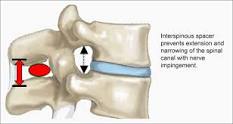Surgery
General advice after surgery
What you should know
These are some general guidance related to the most common spinal operations.
What to look out for
|
These are some general guidance related to the most common spinal operations.
|
What to look out for
|
Lumbar Discectomy
This type of surgery is normally carried out for patients suffering with nerve pain in the leg (sciatica). Sciatica is common in patients in their 30s to 50s. In this group of patients, it is usually due to a disc prolapse or protrusion (a ‘slipped disc’).A ‘discectomy’ operation is done to remove the part of the disc that is producing the nerve pain down the leg. A ‘decompression’ is to remove bone or soft tissue compressing the contents of the spinal canal. In some cases a combination of the two procedures may be required.
A micro discectomy simply refers to the use of an operating microscope rather than the size of the incision or the amount of disc removed. A mini-open discectomy is the same operations done using magnifying loupes or specialist glasses.
Spinal surgery for sciatica is usually better for the leg pain than it is for back pain. However, both the leg pain and back pain may improve.
Discectomy surgery provides an early improvement in symptoms but there are some risks associated with it.
Symptoms of numbness or weakness can persist after surgery.
Certain types of disc prolapse are more likely to recur than others. Surgery for disc prolapse has a recurrence rate of between 7% and 15% within ten years. This is the same whether or not you have an operation.
Surgery is a better option when severe symptoms have lasted more than 6-8 weeks. Recent studies have shown that waiting at least four months after the onset of back and leg pain, may be better timing for surgery in terms of recovery and outcome.
Surgery has less risk and is safer for fit and healthy patients. In order to reduce the risks, simple measures such as stopping smoking, losing weight and improving aerobic fitness all help.
Older patients may have specific risk factors such as heart disease. If you are taking tablets used to thin the blood such as warfarin, aspirin or clopidogrel which increase the risks of bleeding, your surgical team must be informed.
Patients who are diabetic have a slightly increased risk of infection generally and the nerves in diabetic patients may not recover as well as others.
Your surgeon will discuss with you the potential risks and benefits of surgery specific to you.
Spinal Stabilization
This is a term which used along with the term 'spinal instrumentation'. It is where the area to be fused is also fixed with an implant device such as a rigid system of screws and rods to reduce movement and possiblly improve a solid fusion.The implants, screws, and rods are usually made of titanium so that an MRI can be done if needed.When the spine is unstable as a result of fractures or bone loss because of tumours, stabilizing the spine with an internal scaffold of metal, will enable an earlier return to walking and reduce the risk of the spine displacing and becoming painful.
Surgery for scoliosis will usually involve stabilization of the spine with rods and screws to hold the spine in a realigned position until bone healing and fusion has occured.
Spinal Fusion
Cervical Fusion: Cervical fusion is most commonly done to treat a cervical herniated disc, it is also done to remove bone spurs associated with cervical spinal stenosis and arthritis. Cervical fusion is usually performed with an approach though the front of the neck.Lumbar Fusion: The goal of a lumbar spinal fusion is to stop the painful motion segment in the lower back. Most commonly this type of surgery is done for pain and disability caused by lumbar degenerative disc disease or a spondylolisthesis - where 2 vertebrae are slipping against each another. The joint between two bones is removed and replaced with bone graft which will grow the 2 bones together. This graft can be taken from the patient's hip, or a synthetic bone graft substitute can be used. In the spine, because there are so many mobile joints, the patient may not be aware of stiffness if only 1 or 2 joints are fused.
The approach to the spine can be made from the front, the back, both front and back or the side depending where the fusion needs to be performed.
Interspinous Process Spacers
Lumbar spinal stenosis is common among individuals over 60 years, and surgery for lumbar spinal stenosis is one of the most often performed procedures for the adult lumbar spine. The tunnel where the spinal cord travels through the bones of the spine becomes narrow due to wear and tear of the spinal discs and joints and the nerves that go through this narrowed canal may be squeezed when the person stands or walks any distance, causing nerve tingling, pain, numbness or weakness in the legs (this is called neurogenic claudication). Symptoms are relieved when the spine is flexed (when sitting or leaning forwards). Bending forward creates a slight increase in the space where the spinal cord is situated, and thereby relief of symptoms.This is the rational of the interspinous spacers.

Very many patients reported a significant relief of pain after implantation of this device and current evidence shows that these procedures are efficacious for carefully selected patients in the short and medium term, although failure may occur and further surgery may be needed. Patient selection should be carried out by specialist spinal surgeons who are able to offer patients a range of surgical treatment options.
Artificial Disc Replacement
Disc replacement is an operation that is meant to preserve movement. Each patient must be carefully evaluated pre-operatively as many patients are not suitable for the procedure.In the lumbar spine it is sometimes offered for severe back pain that has not improved despite trying treatments that are usually effective. A CT scan is often done to exclude arthritis of the small facet joints of the spine, as if there is arthritis in these joints the operation is not likely to be helpful. Disc replacement in the lumbar spine is not as popular as it was 10 years ago. After surgery, the initial results seem to be excellent, however, the long term results do not appear to be much different to a spinal fusion for back pain. The operation is either performed on the front of the spine though the abdomen, or through the side of the abdomen.
In the cervical spine, as in the lumbar spine, the goal is to mimic the form and function of the original disc. The surgery, which is performed from the front of the neck, requires the diseased disc to be removed and an artificial disc placed in the space.
The Patient Line website offers information for patients with spinal conditions:
Sciatica, back pain, spinal stenosis, disc herniation, scoliosis and many other spine conditions explained in a clear reliable, and trustworthy way. Not for profit EUROSPINE experts are here to help patients and their families understand what may be worrying them.
EUROSPINE is a society of spine specialists of various disciplines with a large knowledge of spine pathologies. All well-known and accepted treatment modalities for spine pathologies are represented by the members of the society. However, the Society cannot accept any responsibility for the use of the information provided; the user and their health care professionals must retain responsibility for their health care management.

